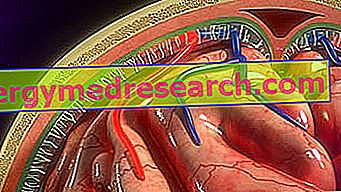Generality
What is ricotta?
Ricotta is a dairy product obtained by heating, with or without adding acidifiers, the whey left over from the processing of the cheese (re-cooked).

Since it is not produced from curd, but from one of its by-products (whey), ricotta cannot be considered a real cheese.
In various languages, ricotta is known as:
- whey cheese or whey protein cheese in English-speaking countries
- serac or recuit or brousse in francophone ones
- requeson in Spain
- requeijao in Portugal.
The term ricotta usually means fresh.
Fresh ricotta has the typical truncated-conical shape of the perforated containers into which it is put to drain. White in color, more or less candid, depending on the type of milk used, it has a fairly soft and grainy consistency, not elastic, nor hard.
The smell of fresh ricotta is warm milk and hay (the latter is more intense in products made from sheep's milk and even more buffalo milk).
The weight is variable and can fluctuate, depending on the type, from 100 g to several kilograms.
Production
How is ricotta produced?
During the heating of the whey, which depending on the origin is brought up to a temperature of 75-95 ° C, the milk proteins, mainly the whey proteins, coagulate.
In this way white flakes are formed which spontaneously surface on the surface, incorporating a certain amount of fat, lactose and mineral salts inside them. This mass is then extracted with a slotted spoon and collected in special perforated baskets, to allow it to drain before giving it its characteristic shape.
The residual serum, called "scotta", is used to feed livestock or to extract lactose.
Types
What are the variants of ricotta?
The standard production mechanism may undergo minor changes and additions depending on the organoleptic and commercial requirements; on the market we find, for example, cow, sheep and buffalo ricotta, fresh, seasoned, short and long-lasting ricottas, sweet (natural flavor) or savory. The addition of citric or tartaric acid during the production process favors the coagulation of proteins, while the addition of milk (5-25%) or cream allows to increase the yield and obtain a more creamy and tasty product, as it is more rich in fat.
Therefore, when buying ricotta it is important to check the nutritional values shown on the label: the differences between one product and another can be surprisingly significant (in general the buffalo ricotta is fatter than that of sheep, which in turn is fatter than cow's).
Property
Nutritional characteristics of cow's milk ricotta
Chemical composition | Value for 100g | |
Edible part | 100.0 | |
water | 75, 7g | |
Protein | 8, 8g | |
Limiting Amino Acid | Tryptophan | |
Total lipids | 10, 9g | |
Saturated fatty acids | 6.82g | |
Monounsaturated fatty acids | 2.76g | |
Polyunsaturated fatty acids | 0.39 g | |
Cholesterol | 57, 0mg | |
Carbohydrates available | 3.5g | |
Starch | 0.0g | |
Soluble sugars | 3.5g | |
Total fiber | 0.0g | |
Soluble fiber | 0.0g | |
Insoluble fiber | 0.0g | |
Phytic acid | 0.0g | |
Alcohol | 0.0g | |
Power | 146, 0kcal | |
Sodium | 78, 0mg | |
Potassium | 119, 0mg | |
Iron | 0.4mg | |
Football | 295, 0mg | |
Phosphorus | 237, 0mg | |
Magnesium | 17, 0mg | |
Zinc | 0.5mg | |
Copper | 0, 02mg | |
Selenium | 3, 9μg | |
Thiamine | - mg | |
Riboflavin | - mg | |
Niacin | - mg | |
pyridoxine | - mg | |
Vitamin A retinol eq, | 128, 0μg | |
C vitamin | 0, 0mg | |
Vitamin E | 0, 21mg | |
Vitamin D | - IU | |
Ricotta is a food that belongs to the II Basic Food Group (Milk and Derivatives); as such it has the function of increasing the intake of high biological value proteins (with all the essential amino acids in the right quantities), as well as providing certain specific minerals and vitamins.
In general, in spite of humble origins, cow ricotta is perhaps today the most noble of all dairy products . It has a medium energy supply (comparable to that of a medium fat meat or a lean meat), supplied mainly by fats, followed by proteins and finally by carbohydrates.
The protein quality is clearly higher than that of cheeses (rich in caseins instead of whey protein), while the lipid content (if produced entirely from whey) is considerably lower. It must however be remembered that the fatty acids of milk and derivatives are mainly saturated and that they are accompanied by moderate amounts of cholesterol; while on the one hand ricotta is considered one of the most suitable dairy products for nutritional therapy for hypercholesterolemia, on the other it requires a reasonable consumption that excludes any excess (in terms of portion and frequency of consumption).
The fraction of carbohydrates is represented by lactose, a disaccharide attributable to adverse reactions for those suffering from specific food intolerance.
Regarding the mineral content, ricotta is considered an excellent source of calcium and phosphorus, two essential macronutrients for the construction and maintenance of the skeleton. The amount of sodium, however lower than that of most cheeses, is not entirely negligible.
As for vitamins, ricotta provides excellent quantities of riboflavin (vit B2 - essential coenzyme component) and retinol equivalent (vit A - necessary for maintaining visual function and, in certain chemical forms, a powerful antioxidant).
Ricotta does not contain dietary fiber.
Ultimately, in the context of the II Basic Food Group, cow ricotta is considered a poorly caloric, digestible and nutritious product. Because of these characteristics, cow's milk ricotta is a food that can be contextualised in many diets; an exception is that for subjects intolerant to lactose given that - unlike seasoned cheeses - ricotta cheese has a high lactose percentage, equal to about 3.5% (higher in ricotta obtained by adding milk and cream).
It is used as a representative of milk derivatives also in nutritional therapies for overweight and metabolic pathologies (albeit in moderate quantities and with reduced frequency).
While it is granted in the lacto-vegetarian diet (as long as there is no trace of animal rennet), it is rejected by the vegan philosophy.
The average portion of ricotta is 100-150 g (about 150-220 kcal).
Homemade ricotta
After having shown you how homemade cheese is made, in this video Alice, our PersonalCooker, illustrates in detail how to prepare ricotta using the residual milk whey.
Ready to take notes? Good vision!
Ricotta - how to prepare it at home
X Problems with video playback? Reload from YouTube Go to Video Page Go to Video Recipes Section Watch the video on youtubeSee also the vegan variant: "Ricotta di Soya"
Recipes with Ricotta
The official Gastronomic laboratory of MypersonaltrainerTv never stops; with our PersonalCooker Alice we know how to enhance the taste and the nutritional virtues of ricotta by preparing simple and balanced meals.
We present below the recipe for an authentic delicacy, the ricotta tart, inviting you to connect on our Youtube channel to discover other recipes based on ricotta .
Ricotta tart
X Problems with video playback? Reload from YouTube Go to Video Page Go to Video Recipes Section Watch the video on youtube



